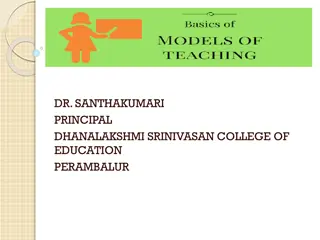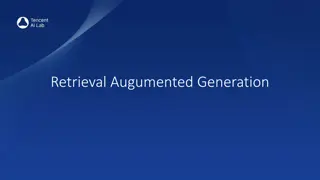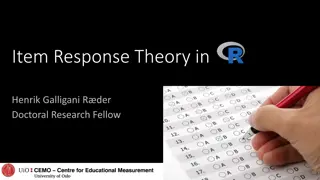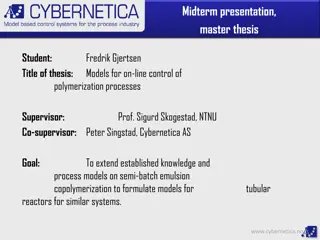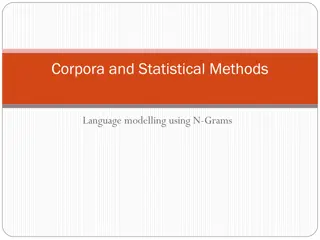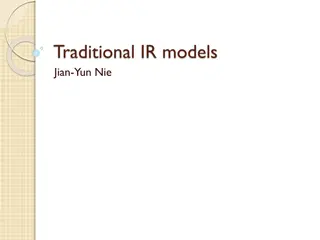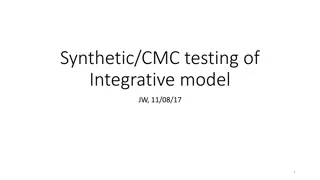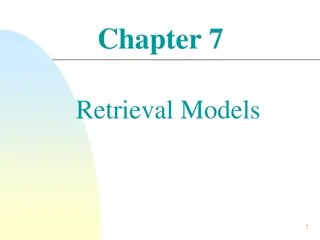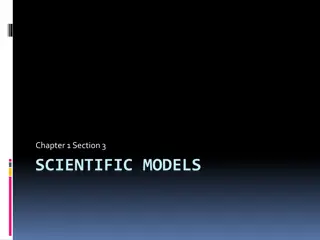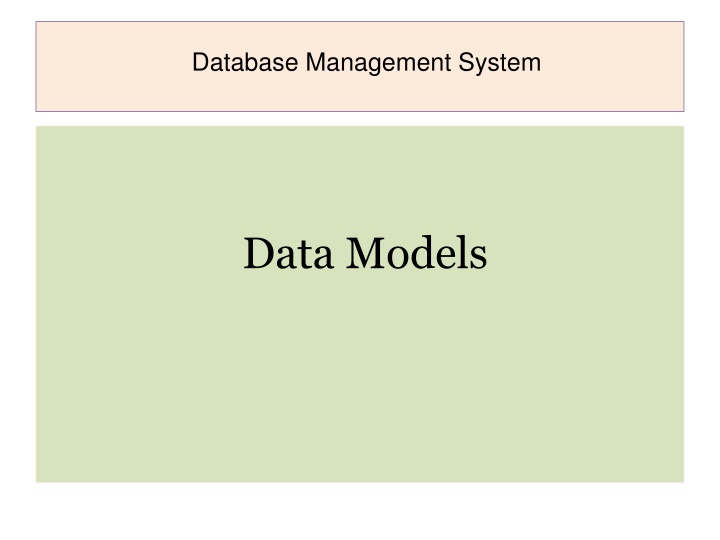
Database Modeling: Hierarchical, Network, and Entity Relationship Models
Explore different database modeling concepts including hierarchical, network, and entity-relationship models. Learn how data is organized, relationships are established, and how entity-relationship diagrams visually represent database structures.
Download Presentation

Please find below an Image/Link to download the presentation.
The content on the website is provided AS IS for your information and personal use only. It may not be sold, licensed, or shared on other websites without obtaining consent from the author. If you encounter any issues during the download, it is possible that the publisher has removed the file from their server.
You are allowed to download the files provided on this website for personal or commercial use, subject to the condition that they are used lawfully. All files are the property of their respective owners.
The content on the website is provided AS IS for your information and personal use only. It may not be sold, licensed, or shared on other websites without obtaining consent from the author.
E N D
Presentation Transcript
Database Management System Data Models
Hierarchical Model This database model organises data into a tree-like- structure, with a single root, to which all the other data is linked. The hierarchy starts from the Root data, and expands like a tree, adding child nodes to the parent nodes. In this model, a child node will only have a single parent node. This model efficiently describes many real-world relationships like index of a book, recipes etc. In hierarchical model, data is organised into tree-like structure with one-to-many relationship between two different types of data, for example, one department can have many courses, many professors and of-course many students.
Network Model This is an extension of the Hierarchical model. In this model data is organised more like a graph, and are allowed to have more than one parent node. In this database model data is more related as more relationships are established in this database model. Also, as the data is more related, hence accessing the data is also easier and fast. This database model was used to map many-to-many data relationships. This was the most widely used database model, before Relational Model was introduced.
Entity Relationship Model The entity-relationship (E-R) data model perceives the real world as consisting of entities, and relationships among these objects. The E-R model is very useful in mapping the meanings and interactions of real-world enterprises onto a conceptual schema An ER model is a design or blueprint of a database that can later be implemented as a database. The main components of E-R model are: entity set and relationship set. basic objects, called
What is an Entity Relationship Diagram (ER Diagram)? An ER diagram shows the relationship among entity sets. An entity set is a group of similar entities and these entities can have attributes. In terms of DBMS, an entity is a table or attribute of a table in database, so by showing relationship among tables and their attributes, ER diagram shows the complete logical structure of a database.
Here are the geometric shapes and their meaning in an E-R Diagram. Rectangle: Represents Entity sets. Ellipses: Attributes Diamonds: Relationship Set Lines: They link attributes to Entity Sets and Entity sets to Relationship Set Double Ellipses: Multivalued Attributes Dashed Ellipses: Derived Attributes Double Rectangles: Weak Entity Sets Double Lines: Total participation of an entity in a relationship set
Components of a ER Diagram ER diagram has three main components: 1. Entity 2. Attribute 3. Relationship




